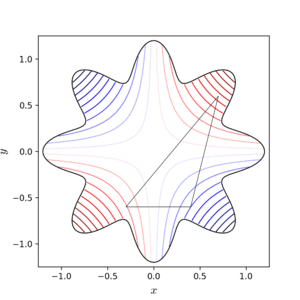Mathematical optimization facts for kids
In science and mathematics, mathematical optimization is all about finding the best way to do something. Imagine you have a problem, and you want to find the perfect answer. Optimization helps you do that! It means finding the best possible solution, like making something as small as possible (minimizing) or as big as possible (maximizing).
Sometimes, problems are simple enough to solve with basic math. But many real-world problems are much more complicated. For these, we often use special computer methods called numerical methods. These methods help computers find the best answers when it's too hard for people to calculate directly.
Contents
What is Mathematical Optimization?
Mathematical optimization is like finding the "sweet spot" for a problem. Think of it as trying to get the best result possible. This could mean:
- Making something as cheap as possible.
- Making something as fast as possible.
- Making something as strong as possible.
- Making something as profitable as possible.
It's about choosing the best options from many choices. You set up a problem using math, and then you try to find the numbers that give you the best outcome.
Minimizing and Maximizing
There are two main goals in optimization:
- Minimizing: This means finding the smallest possible value for something. For example, a company might want to minimize the cost of making a product. A delivery driver might want to minimize the time it takes to deliver all packages.
- Maximizing: This means finding the largest possible value for something. For instance, a farmer might want to maximize the amount of crops they grow. A business might want to maximize its profits.
Real-World Examples
Optimization is used everywhere! Here are a few examples:
- Planning Routes: When a delivery company plans its routes, it uses optimization to find the shortest or fastest way for trucks to visit many stops. This saves time and fuel.
- Designing Products: Engineers use optimization to design cars that use less fuel or airplanes that fly more efficiently. They try to maximize performance while minimizing costs.
- Making Schedules: Schools use optimization to create class schedules that work best for students and teachers. Hospitals use it to schedule surgeries or staff shifts efficiently.
- Investing Money: People who manage money use optimization to choose investments that give the highest returns with the lowest risk.
- Resource Management: Governments and companies use it to decide how to best use limited resources, like water or electricity.
Why is Optimization Important?
Optimization is super important because it helps us make better decisions. It allows us to:
- Save Money: By finding the cheapest way to do things.
- Save Time: By finding the fastest way to complete tasks.
- Improve Efficiency: By making processes work better with less waste.
- Solve Complex Problems: Many problems have too many variables to solve by guessing. Optimization provides a systematic way to find the best answer.
- Innovate: It helps scientists and engineers discover new and better ways to build things or solve problems.
How Computers Help
For simple problems, you might be able to figure out the best answer with a pen and paper. But for most real-world situations, there are too many choices. Imagine trying to find the best route for 100 delivery stops by hand!
This is where computers and numerical methods come in. Computers can quickly test millions of possibilities using special math programs. They can find the optimal solution much faster and more accurately than a person ever could. These methods are like smart search strategies that guide the computer to the best answer without checking every single option.
See also
 In Spanish: Optimizaci%C3%B3n (matem%C3%A1tica) para ni%C3%B1os
In Spanish: Optimizaci%C3%B3n (matem%C3%A1tica) para ni%C3%B1os


